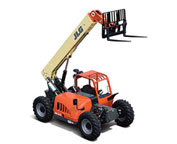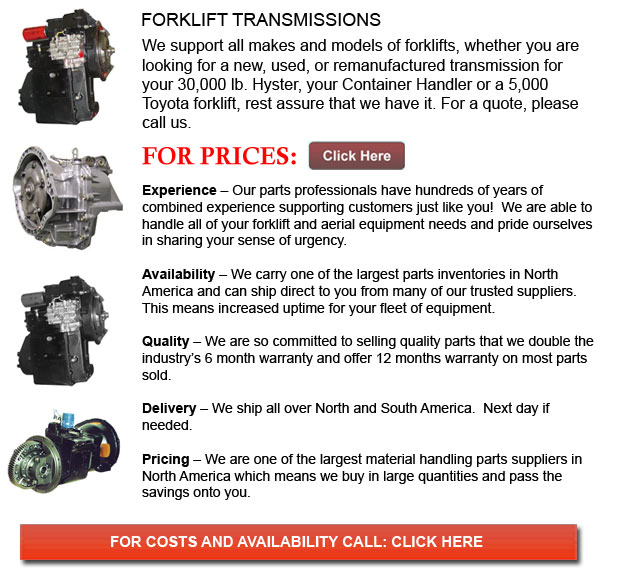
Transmission for Forklifts - A transmission or gearbox makes use of gear ratios in order to provide torque and speed conversions from one rotating power source to another. "Transmission" refers to the entire drive train which includes, gearbox, clutch, differential, final drive shafts and prop shaft. Transmissions are more commonly used in motor vehicles. The transmission changes the productivity of the internal combustion engine in order to drive the wheels. These engines should work at a high rate of rotational speed, something that is not appropriate for starting, slower travel or stopping. The transmission raises torque in the process of reducing the higher engine speed to the slower wheel speed. Transmissions are also used on fixed machines, pedal bikes and anywhere rotational speed and rotational torque require adaptation.
Single ratio transmissions exist, and they function by altering the speed and torque of motor output. Numerous transmissions comprise multiple gear ratios and could switch between them as their speed changes. This gear switching can be done by hand or automatically. Forward and reverse, or directional control, could be supplied as well.
The transmission in motor vehicles will typically connect to the engines crankshaft. The output travels via the driveshaft to one or more differentials in effect driving the wheels. A differential's main function is to be able to adjust the rotational direction, though, it could even provide gear reduction as well.
Power transformation, hybrid configurations and torque converters are various alternative instruments for speed and torque adaptation. Regular gear/belt transmissions are not the only machine available.
Gearboxes are referred to as the simplest transmissions. They provide gear reduction frequently in conjunction with a right angle change in the direction of the shaft. Frequently gearboxes are used on powered agricultural machines, also referred to as PTO machinery. The axial PTO shaft is at odds with the normal need for the powered shaft. This particular shaft is either vertical, or horizontally extending from one side of the implement to another, which depends on the piece of machine. Silage choppers and snow blowers are examples of much more complex machinery which have drives supplying output in multiple directions.
In a wind turbine, the type of gearbox used is more complicated and larger than the PTO gearbox used in farming machinery. The wind turbine gearbos changes the high slow turbine rotation into the faster electrical generator rotations. Weighing up to several tons, and depending upon the actual size of the turbine, these gearboxes normally contain 3 stages so as to accomplish a whole gear ratio from 40:1 to more than 100:1. To be able to remain compact and in order to distribute the massive amount of torque of the turbine over more teeth of the low-speed shaft, the initial stage of the gearbox is typically a planetary gear. Endurance of these gearboxes has been a concern for some time.
![]() Click to Download the pdf
Click to Download the pdf
Forklift Parts








Lift Parts Express
TOLL FREE: 1-888-695-7994
LOCAL: (623) 900-4309
4980 S Alma School Rd A2-247
Chandler, Arizona
forkliftpartschandler.com
Email Us
About Us



